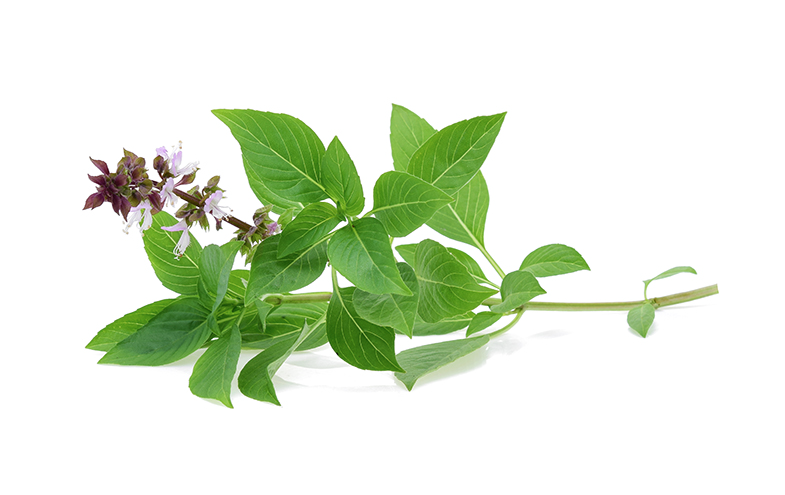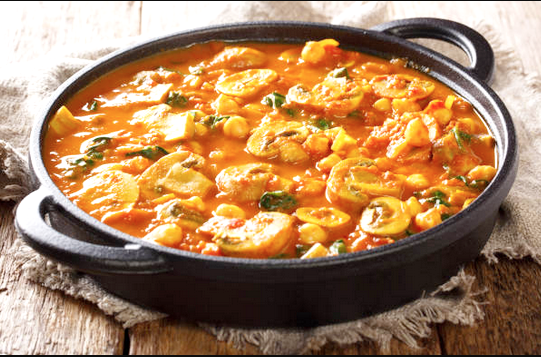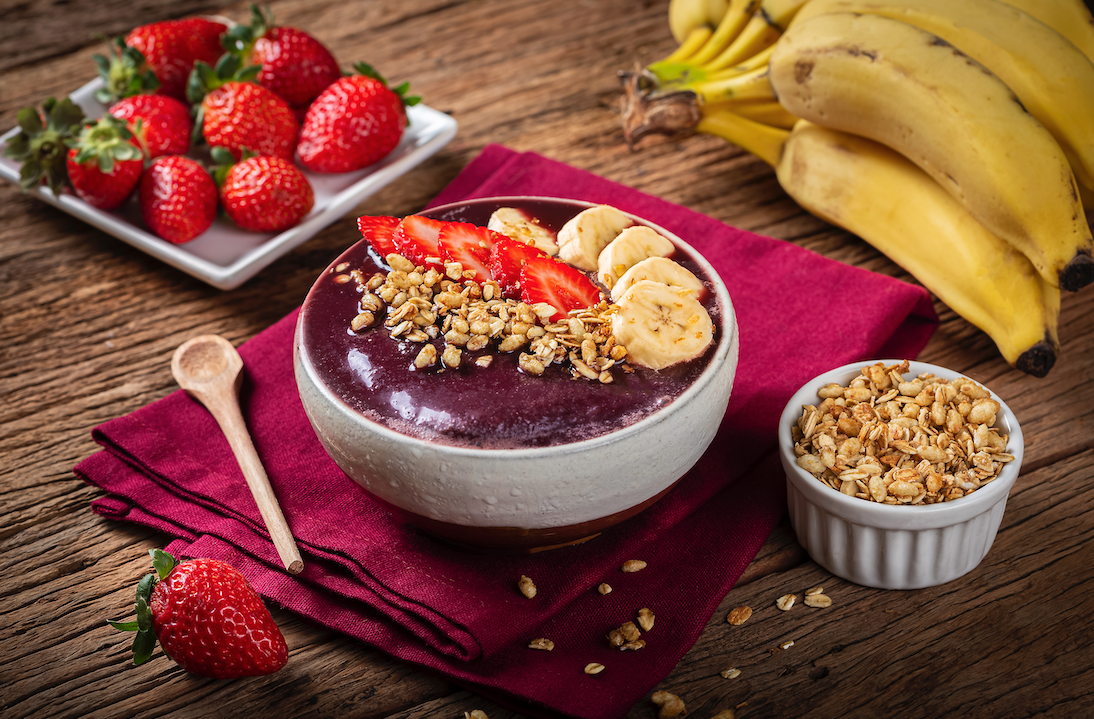
Sweet Basil
Sweet Basil or common basil is the most widely available form of basil, and it has long history of being used in cooking and for medical purposes. Sweet Basil is not the same as Holy Basil.
Usage
Anti-inflammatory
It has anti-inflammatory properties, and helps maintain health and detoxifies the body.
Skin benefits & Antibacterial
Great for skin, and helps with problems with acne.
Digestion
Sweet basil contains eugenol, which boost digestion.

Ancient Herbal Therapy
In traditional medicine, O. basilicum has been intensively used for the treatment of gastric and respiratory diseases, anxiety, headaches and migraines, inflammation, cough, cold, digestive disorders, chest and lung complaints, fever, insect bites, menstrual cramps, and sinusitis, and demonstrates carminative, stimulant, diaphoretic, diuretic, antiseptic, anesthetic, antispasmodic, anthelmintic, antidiarrheal, analgesic, and antitussive properties.
How to sweet basil to your diet?
In a meal
Sweet basil is often used in meals, in anything from paste, pizza, in soups, and other meat and veggie meals.
Make a tea
While holy basil is mostly used for a tea, you can easily make a tea from sweet basil too.
As a Supplement
Available in capsules, people use these supplements to help anxiety, stress, diabetes, high cholesterol, and many other conditions.
The name basil comes from the Greek basileus or “king”.
Sweet basil is mostly used in the culinary world, but has some healing properties.
Unlike sweet basil, holy basil (tulsi) is rarely used in the culinary world, and more as a medical plant.
Basil has been around for over 4,000 years.
Fun Facts
During the Victorian era, sweet basil as a gift meant “good wishes” to the receiver.
About
Basil is obtained from the foliage of Ocimum basilicum, an annual herbaceous plant up to 100 cm in height. It is native to tropical Asia, Africa, and America and widely cultivated in pots and gardens in Europe, South-west Asia, and the USA.
The dried sweet basil leaves have a sweet, fragrant odor, and their taste is aromatic, warm, and slightly pungent. Basil is considered as the finest of all aromatic herbs and is widely used to flavor cooked vegetables, tomato-paste products, and fish. It is sometimes used with or as a substitute of, oregano to flavor pizza and spaghetti sauce and is employed together with other spices in the manufacture of vinegar, mustard, and sausages.
Though not used in large quantities, sweet basil oil is used quite extensively in the flavoring of several food products, including those for confectionery, alcoholic beverages (liqueurs), baked goods, and condiments. The commercial essential oils are usually methyl-chavicol (an isomer of anethole) and/or linalool rich. However, O. basilicum oils are particularly variable and may also have high amounts of methyl-cinammate, geraniol, eugenol, and methyl-eugenol.
Research
A number of studies have discovered the effect of basil essential oil on drugs such as amoxicillin and flumequine. It has demonstrated antimicrobial activity comparable to these drugs, presenting a strong effect against Gram-positive and Gram-negative bacteria. This effect increased when the essential oil is produced in the autumn and winter when linalool content is in higher concentrations.
Animal studies of sweet basil suggest use as an insect repellant, and anti-inflammatory agent, as well as in cardiovascular and CNS diseases and diabetes; however, clinical studies are lacking to support use in any condition.
Safety
Clinical studies are lacking to provide dosing recommendations for sweet basil. Traditionally, doses of 5 to 10 mL, as a tincture, are recommended. Sensitive individuals, pregnant or lactating women, small children and the elderly should avoid basil without consulting a health practitioner, as an emmenagogue and abortifacient effects have been reported for O. basilicum.
Sources
Ch, M. A., Naz, S. B., Sharif, A., Akram, M., & Saeed, M. A. (2015). Biological and pharmacological properties of the sweet basil (Ocimum basilicum). Journal of Pharmaceutical Research International, 330-339.
Marwat, S. K., Khan, M. S., Ghulam, S., Anwar, N., Mustafa, G., & Usman, K. (2011). Phytochemical constituents and pharmacological activities of sweet Basil-Ocimum basilicum L.(Lamiaceae). Asian Journal of Chemistry, 23(9), 3773.



